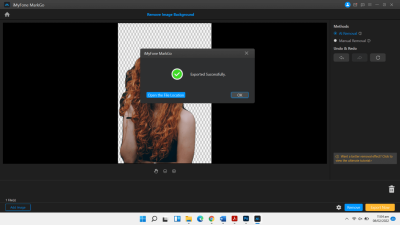Looking to elevate your non-profit’s website, social media, or marketing materials without breaking the bank? Shutterstock offers a treasure trove of high-quality images, and the good news is, there are ways for non-profits to access these images for free or at a reduced cost. In this guide, we’ll explore how your organization can tap into Shutterstock’s resources legally and ethically, ensuring your visuals are engaging and impactful. Whether you’re new to stock images or a seasoned pro, understanding the options available to non-profits can make a big difference in your outreach efforts.
Understanding Shutterstock’s Licensing Policies for Non-Profits

When it comes to using images from Shutterstock, understanding licensing policies is crucial—especially for non-profit organizations that rely on ethical and legal use of resources. Shutterstock offers different types of licenses, primarily Standard and Enhanced, each with its own rules about how images can be used. For non-profits, the key is to find licensing options that align with your intended use without incurring hefty costs.
Here’s what you need to know:
- Standard License: Suitable for most online and print uses, including websites, social media, presentations, and small print runs. It allows for up to 500,000 copies or views.
- Enhanced License: Needed if your project involves large-scale distribution, merchandise, or products for resale. It also permits unlimited copies but comes at a higher cost.
For non-profits, Shutterstock occasionally offers free or discounted images through special programs, grants, or partnerships. However, these opportunities are limited and often require applying or qualifying based on your organization’s mission and status. Always ensure that you adhere to the licensing terms—using images outside what your license permits can lead to legal issues.
Important tips:
- Always check the license type before downloading: Even free images might have restrictions.
- Keep records of licenses: Save license details and receipts for future reference.
- Respect attribution requirements: Some images may require credit to the creator, so review the license terms carefully.
In summary, understanding Shutterstock’s licensing policies helps non-profits use images responsibly, avoiding legal pitfalls while making the most of available resources. Stay tuned for ways to access free Shutterstock images and make your non-profit stand out!
Steps to Access Free Shutterstock Images for Your Non-Profit
Getting your hands on free Shutterstock images for your non-profit might sound like a complicated process, but it’s actually pretty straightforward once you know the steps. Let’s walk through it together so you can start enhancing your projects with stunning visuals without breaking the bank.
Step 1: Create a Shutterstock Contributor Account
First things first, you need to set up an account on Shutterstock’s contributor platform. Head over to their website and sign up. Make sure to select the option that indicates you’re representing a non-profit organization, as this can sometimes qualify you for special programs or discounts.
Step 2: Join the Shutterstock Non-Profit Program
Shutterstock offers a dedicated program for non-profits that provides access to free or discounted images. After creating your account, look for information about this program. You might need to submit some documentation proving your non-profit status—like your registration certificate or tax exemption letter.
Step 3: Verify Your Non-Profit Status
Once you’ve submitted your documents, Shutterstock reviews your application. This process can take a few days. When approved, you’ll receive confirmation, and your account will be linked to the non-profit benefits, including access to free images.
Step 4: Browse and Download Free Images
Now, you’re all set! Log into your contributor dashboard and navigate to the free images section or use filters to find free content. You can search by keywords relevant to your cause—like “community,” “volunteers,” “charity,” or whatever fits your project—and download the images you need.
Step 5: Use and Credit Appropriately
Make sure to review Shutterstock’s licensing terms for free images. Typically, non-profits can use the images for promotional materials, websites, or social media. While attribution isn’t always required, it’s good practice to credit photographers when possible—this supports creators and promotes ethical use of images.
And that’s it! With these simple steps, you can access a treasure trove of high-quality images for your non-profit’s campaigns, helping you tell your story powerfully without straining your budget.
Tips for Finding High-Quality Free Images on Shutterstock
Finding the perfect image that captures your non-profit’s mission can feel like searching for a needle in a haystack. But don’t worry—there are some handy tips to help you locate high-quality, impactful photos quickly and easily.
Tip 1: Use Specific Keywords
Be as precise as possible with your search terms. Instead of just typing “charity,” try “children receiving education,” “volunteers planting trees,” or “community health workshop.” Specific keywords narrow down results and help you find images that truly match your message.
Tip 2: Filter by Image Quality and Orientation
Use Shutterstock’s filtering options to sort images by resolution, orientation (landscape or portrait), and even color scheme. High-resolution images look professional and crisp, especially if you plan to print materials or use images on large screens.
Tip 3: Check Image Licensing Details
Always verify that an image is marked as free for non-commercial or non-profit use. Sometimes, images labeled as free are only free for personal use. Make sure the licensing aligns with your intended use to avoid any legal headaches.
Tip 4: Look for Authentic, Candid Shots
Authentic images resonate more with viewers. Search for photos depicting real people engaged in genuine activities—smiling volunteers, community gatherings, or heartfelt moments. These images evoke emotion and build trust with your audience.
Tip 5: Save and Organize Your Favorites
As you find great images, save them into collections or folders within your Shutterstock account. This makes it easier to compare options and select the best visuals when you’re ready to create your content.
Tip 6: Keep an Eye Out for Seasonal and Trending Topics
Images related to current events or seasonal themes (like holidays or awareness months) can make your campaigns more timely and relevant. Use trending keywords to discover images that resonate with current conversations.
By applying these tips, you’ll become a pro at hunting down stunning, high-quality images on Shutterstock that elevate your non-profit’s storytelling and outreach efforts. Remember, the right visuals can make a huge difference in engaging your audience and inspiring action!
Alternative Resources for Free Non-Profit Images
While Shutterstock is a fantastic resource with a vast library of high-quality images, it’s always good to have some alternatives up your sleeve—especially if you’re working with a tight budget or looking for unique visuals. Luckily, there are plenty of websites offering free images that are perfect for non-profit use. Let’s explore some of the top options:
Unsplash
Unsplash is a favorite among non-profits and content creators alike. They offer a huge collection of high-resolution photos contributed by photographers around the world. The best part? All images are free for commercial and non-commercial use, with no attribution required (though giving credit is always appreciated!).
Pexels
Pexels provides a wide array of free stock photos and videos. Their library covers diverse topics, making it easy to find visuals that match your non-profit’s mission. Their license is very flexible, allowing you to use images freely in campaigns, websites, and even print materials.
Pixabay
Pixabay hosts over 1.7 million free images, videos, and music. Their images are released under Creative Commons Zero (CC0), meaning you can use them without asking for permission or giving credit. It’s a fantastic resource for diverse and vibrant visuals.
Flickr Creative Commons
Flickr hosts a large community of photographers sharing their work under Creative Commons licenses. When searching, make sure to filter by the correct license type—look for images marked for commercial use and with no attribution, if needed. Always double-check the license details before using.
FreeImages
FreeImages offers a broad selection of free stock photos suitable for various projects. They categorize images neatly, making it easier to find exactly what you need. Just remember to review each image’s license to ensure it aligns with your non-profit’s use.
Quick Tips for Using Alternative Resources:
- Always check licensing: Even free sites can have specific restrictions—be sure you’re compliant.
- Opt for high-resolution images: They look more professional and versatile for print and digital use.
- Maintain consistency: Choose images that align with your branding and messaging.
Having these resources handy means you can find the perfect image for any campaign without breaking the bank. Remember, the right visuals can make your message more compelling and memorable!
Best Practices for Using Shutterstock Images in Non-Profit Campaigns
If you’ve decided to use Shutterstock images for your non-profit, that’s great! Their collection can truly elevate your campaigns. However, to make the most of these images and stay within legal and ethical boundaries, here are some best practices:
Understand Your License
Shutterstock offers different licensing options, mainly Standard and Enhanced licenses. For most non-profit uses, the Standard license suffices, but it’s important to read the specifics. Typically, the Standard license covers online use, social media, and printed materials under certain limits.
- Read the license agreement: Know what’s allowed and what’s not.
- Keep documentation: Save license details and receipts, especially if your campaign scales up.
Customize and Brand Your Images
Using Shutterstock images as-is might be tempting, but customizing them helps reinforce your brand and message. Consider cropping, adding overlays, or combining images with your logo. This not only makes the visuals more unique but also helps avoid the “stock photo” look.
Credit When Necessary
While Shutterstock’s licenses generally don’t require attribution, it’s good practice to credit photographers when possible—especially if the image heavily features individuals or specific content. It shows respect for creators and fosters a transparent relationship with your audience.
Use Images Responsibly and Respectfully
Always ensure the images you choose are respectful and appropriate for your audience. Avoid using images that could be construed as offensive or misrepresentative. If an image portrays people, ensure you have rights to use their likeness, especially for campaigns related to sensitive topics.
Optimize for Different Platforms
Resize and compress images for optimal display across your website, social media, and printed materials. High-quality images look great, but large files can slow down your website. Use tools like TinyPNG or ImageOptim to reduce file sizes without losing quality.
Monitor Usage and Feedback
Keep track of how your images perform and gather feedback from your audience. If certain visuals resonate more, consider using similar styles or themes in future campaigns.
By following these best practices, you’ll ensure that your use of Shutterstock images is effective, ethical, and impactful. The right visuals combined with thoughtful implementation can really help tell your non-profit’s story and inspire action!
Conclusion and Additional Resources
In summary, accessing high-quality Shutterstock images for your non-profit projects can significantly enhance your outreach and storytelling efforts. By exploring free image sources, leveraging Shutterstock’s free trial options, and utilizing creative commons licenses, you can obtain impactful visuals without exceeding your budget. Remember to always verify the licensing terms to ensure proper usage and attribution if required.
To recap, here are key steps to maximize your free image resources:
- Utilize Shutterstock’s Free Trial: Sign up for temporary access to a selection of free images.
- Explore Free Stock Image Websites: Websites like Unsplash, Pexels, and Pixabay offer high-quality images suitable for non-profit use.
- Understand Licensing: Always check the licensing details, especially for Creative Commons images, to ensure compliance.
- Use Editing Tools: Enhance images with free editing tools like Canva or GIMP to tailor visuals to your message.
For further assistance, consider consulting the following resources:
| Resource | Description |
|---|---|
| Shutterstock Blog – Free Images | Tips and updates on free image resources from Shutterstock. |
| Unsplash | Popular platform offering free, high-resolution images. |
| Pixabay | Extensive library of free images, videos, and music. |
| Creative Commons | Guidelines and licenses for using Creative Commons content responsibly. |
By leveraging these resources and best practices, your non-profit can effectively incorporate beautiful visuals into your campaigns without incurring additional costs. Happy creating!


